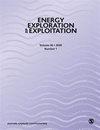Improving Electricity Theft Detection Using Electricity Information Collection System and Customers’ Consumption Patterns
IF 1.6
4区 工程技术
Q4 ENERGY & FUELS
引用次数: 0
Abstract
Electricity theft detection (ETD) techniques employed to identify fraudulent consumers often fail to accurately pinpoint electricity thieves in real time. The patterns associated with electricity use are leveraged to identify anomalies indicative of electricity theft. However, challenges in the benchmark ETD include overfitting and a high incidence of false positives (FPs) resulting from incorrect usage patterns formed by considering only electricity consumption patterns without accounting for external factors that contribute to variations in normal consumption patterns. Further investigation is required to precisely detect instances of electricity theft, thereby minimizing nontechnical losses and forecasting future electricity demand to maintain a stable supply. This study employs a master energy meter located on the transformer side to monitor the amount of energy distributed to the region. Zones with a high likelihood of energy theft are detected by comparing the sum of readings from all the smart meters with the readings from the master energy meter installed on the HV of the substation transformer within the same electric feeder. Ensemble XGBoost machine-learning algorithm and K-Means algorithm are used for the classification of malicious and nonmalicious samples and grouping similar types of consumers together, respectively. This makes the proposed model resistant to false-positive rates caused by changes in usage patterns that aren’t done on purpose. Furthermore, energy thieves are identified by detecting anomalies in consumption behavior while maintaining constant internal and external environmental variables. This novel model proposed here mitigates the FP rate found in the present research of electricity usage data. Our approach outperforms support vector machines, convolution neural network, and logistic regression in simulations. Precision, F1-score, recall, Matthews Correlation Coefficient, Receiver Operating Characteristics (ROC)-Area Under The Curve (AUC), and Precision Recal (PR)-Area Under The Curve (AUC) validate our model. The simulation results show that the proposed K-Means-LSTM-XGBoost model improved the classifier’s F1-score, precision, and recall to 93.75%, 95.16%, and 92.38%, respectively. Our model classifies huge time series data with high precision and can be utilized by the utility for real time electricity theft detection.利用用电信息采集系统和客户用电模式改进窃电检测工作
用于识别欺诈性用户的窃电检测(ETD)技术往往无法实时准确地定位窃电者。与用电相关的模式可用于识别表明存在窃电行为的异常情况。然而,基准 ETD 所面临的挑战包括过度拟合,以及仅考虑用电模式而不考虑导致正常用电模式变化的外部因素所形成的错误用电模式所导致的高误报率 (FP)。需要进一步调查,以精确检测窃电事件,从而最大限度地减少非技术性损失,并预测未来的电力需求,以保持稳定的电力供应。这项研究采用了位于变压器侧的总电能表来监控该地区的电能分配量。通过将所有智能电表的读数总和与安装在同一电力馈线内变电站变压器高压侧的主电表读数进行比较,可检测出能源盗窃可能性较高的区域。在对恶意和非恶意样本进行分类以及对同类消费者进行分组时,分别使用了集合 XGBoost 机器学习算法和 K-Means 算法。这使得所提出的模型能够抵御非故意的使用模式变化造成的假阳性率。此外,在保持内部和外部环境变量不变的情况下,还能通过检测消费行为的异常来识别能源窃贼。本文提出的这一新颖模型降低了目前用电数据研究中发现的 FP 率。在模拟实验中,我们的方法优于支持向量机、卷积神经网络和逻辑回归。精确度、F1 分数、召回率、马修斯相关系数、接收者操作特征曲线下面积(ROC)和精确召回率曲线下面积(PR)验证了我们的模型。仿真结果表明,所提出的 K-Means-LSTM-XGBoost 模型将分类器的 F1 分数、精确度和召回率分别提高到了 93.75%、95.16% 和 92.38%。我们的模型能对庞大的时间序列数据进行高精度分类,可用于电力公司的实时窃电检测。
本文章由计算机程序翻译,如有差异,请以英文原文为准。
求助全文
约1分钟内获得全文
求助全文
来源期刊

Energy Exploration & Exploitation
工程技术-能源与燃料
CiteScore
5.40
自引率
3.70%
发文量
78
审稿时长
3.9 months
期刊介绍:
Energy Exploration & Exploitation is a peer-reviewed, open access journal that provides up-to-date, informative reviews and original articles on important issues in the exploration, exploitation, use and economics of the world’s energy resources.
 求助内容:
求助内容: 应助结果提醒方式:
应助结果提醒方式:


